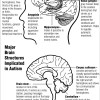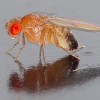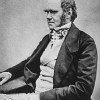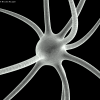Defining the Enemy, Advances in Autsim Research
 For most people the ideas of genes and traits recall a few scattered facts from their primary schooling on Mendel and his pea plants; short ones, tall ones, Punnett squares and the like. When it comes it comes to simple traits, like eye color, people may think that it is only a matter of some combination of dominant or recessive genes, i.e. BB, Bb, or bb. As it turns out, eye color is more genetically complex than this. So one could imagine that solving the genetic mysteries behind autism are even more complex.
For most people the ideas of genes and traits recall a few scattered facts from their primary schooling on Mendel and his pea plants; short ones, tall ones, Punnett squares and the like. When it comes it comes to simple traits, like eye color, people may think that it is only a matter of some combination of dominant or recessive genes, i.e. BB, Bb, or bb. As it turns out, eye color is more genetically complex than this. So one could imagine that solving the genetic mysteries behind autism are even more complex.
In a recent review of autism research, Brent Bill and Daniel Geschwind (Current Opinion in Genetics & Development Volume 19, Issue 3, June 2009, Pages 271-278) survey the latest advances in tackling autism spectrum disorders. As is explained in the review, pinning down traits and genes is extremely difficult for mental illnesses which involve aspects of cognition that are still only just beginning to be understood.
When it comes to eye color, even a 5 year old can tell you that someone has green, blue, or brown eyes. If we wanted to be a bit fancier, we could imagine that with a chart and camera, we could put eye colors into dozens of systematic categories. But measuring and evaluating the cognitive defects that characterize autism (impaired social behavior, language deficits, repetitive behavior, ect.) is far more challenging.
That is not to say that defining where along the autistic spectrum an individual is an impossible task, but that it is as yet still somewhat imprecise. After all, can you imagine characterizing other complex cognitive traits, humor for example? How funny is a particular comedian? Maybe there is funny or unfunny, but what is the difference between Jerry Sienfeld funny and Victor Borge funny?
Difficulty in characterizing the traits of autism also hampers the high throughput techniques that have made finding genes for other simpler illnesses much more effective. As mentioned in the paper, increases in orders of magnitudes of subjects in some studies have not yielded the desired results, and further increases in subjects will be needed. This is not to mention the further confounding fact that traits which appear similar on the surface may have vastly different genetic causes. After all, if you were looking at humor, and only counted something as funny based upon someone laughing, would that really tell you a lot the difference between Three Stooges funny and Woody Allen funny?
Despite these challenges, there has been progress in identifying some areas of the genome that may have a significant role in autism
| Print article | This entry was posted by connolly on October 5, 2009 at 3:21 pm, and is filed under G2C Online. Follow any responses to this post through RSS 2.0. You can skip to the end and leave a response. Pinging is currently not allowed. |








